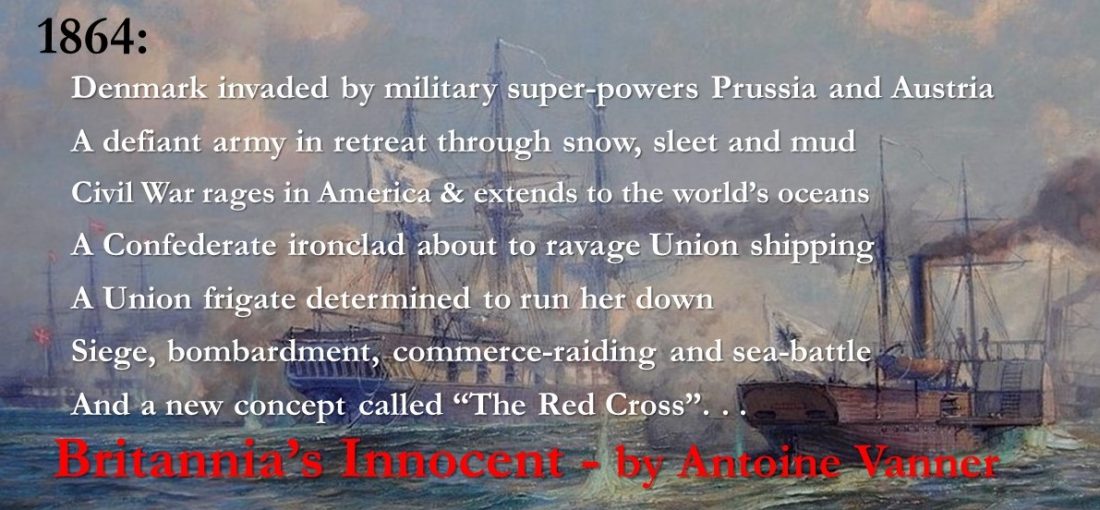An Unequal Duel: Trader vs. Privateer 1744
The story of war against maritime trade in the Age of Fighting Sail is usually told, whether in fact or in fiction, from the viewpoint of the naval commerce-raider intent on prize-money. One finds few accounts which view these contests from the side of the victims. I was therefore fascinated by stumbling recently on an account of a furious battle between a civilian trader – armed, as was essential at the time – and a French privateer in 1744, during the War of Austrian Succession.
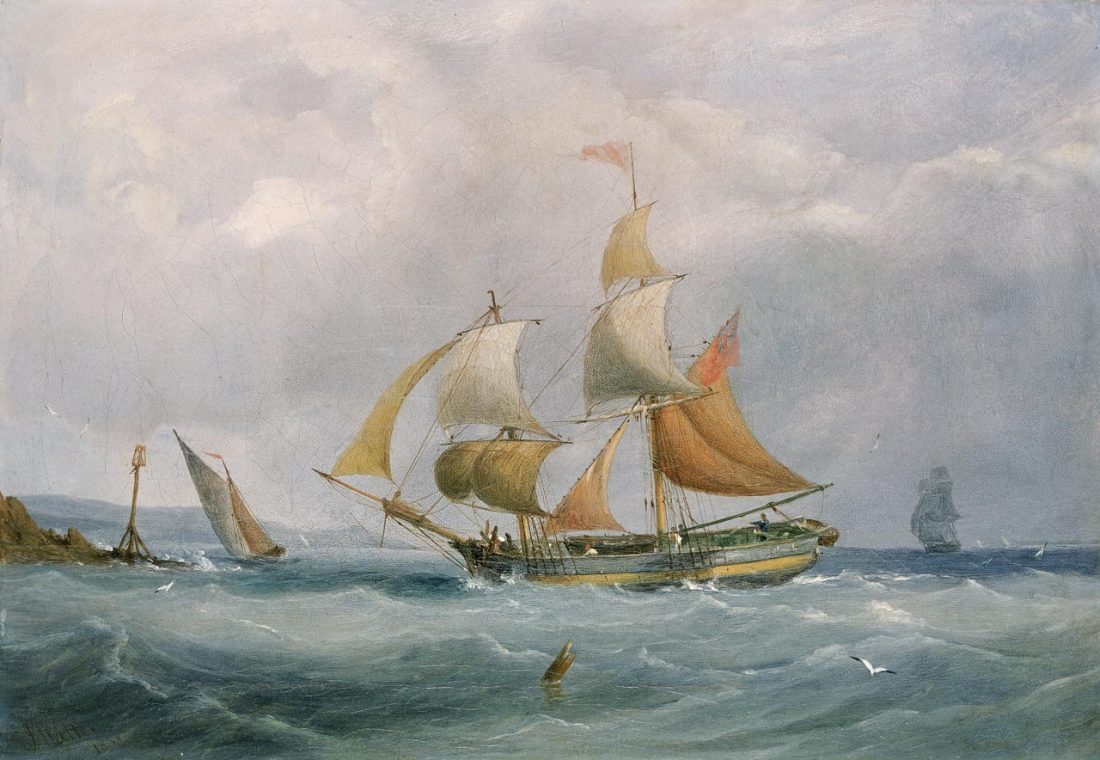 A trading brig by Joseph Walter,1838 – the Isabella may have looked similar
A trading brig by Joseph Walter,1838 – the Isabella may have looked similar
The Wrightson and Isabella of Sunderland was a merchant ship engaged in trade across the North Sea and commanded by a Captain Richard Avery Hornsby (1699-1751). No details are available of this vessel but given the fact that she was manned by only five men and three boys, besides Hornsby, and that she mounted four carriage guns – which could only have been small ones – and two swivels, she cannot have been of large size, perhaps brig-rigged. On 13th June 1744 Hornsby arrived off the Dutch coast at Scheveningen, the coastal suburb of The Hague, in company with three smaller vessels with which he had sailed in convoy from Norfolk. The Isabella (it’s easier to refer to her as such) was laden with malt and barley. At this period there was no harbour at Scheveningen – one would not be constructed until 1904 – and trading vessels had to lie offshore and transfer cargoes ashore in smaller boats. Fishing boats were drawn up on to the beach (a subject for many painters, including Vincent van Gogh, for many years).
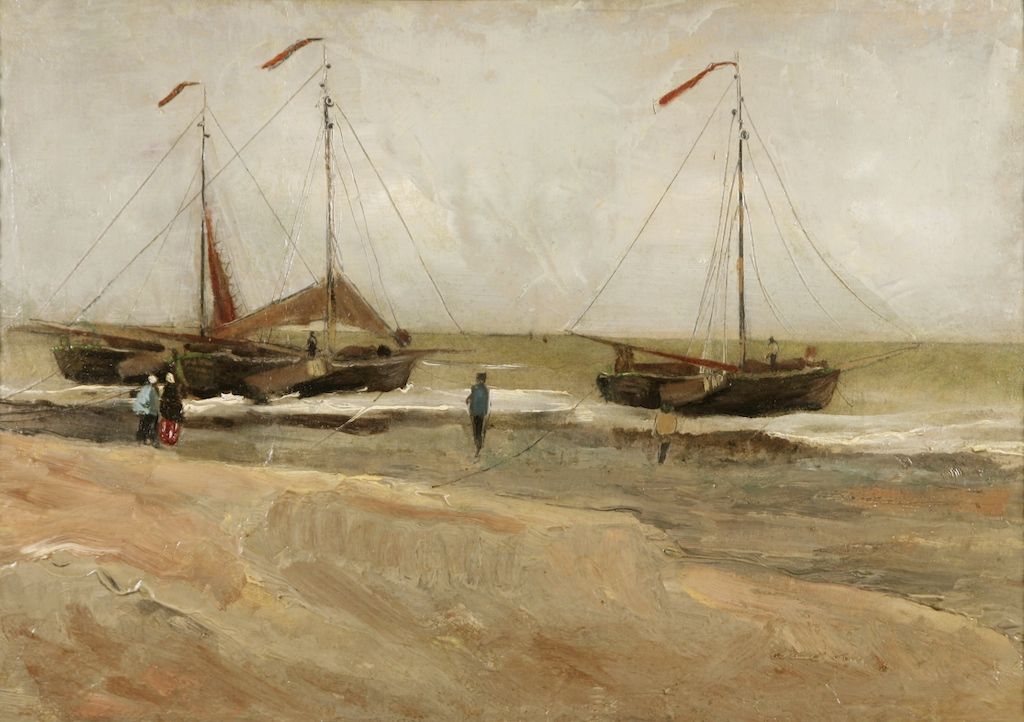 Fishing boats on the beach at Scheveningen, 1882 – by Vincent van Gogh
Fishing boats on the beach at Scheveningen, 1882 – by Vincent van Gogh
When the Isabella arrived, a large number of fishing boats were lying offshore and among them a French privateer, the Marquis de Brancas, had concealed herself. Commanded by a Captain André, this appears to have been a larger vessel that carried ten carriage guns and eight swivels, plus a crew of 75. She made straight for the Isabella, the other British ships turning away and escaping.
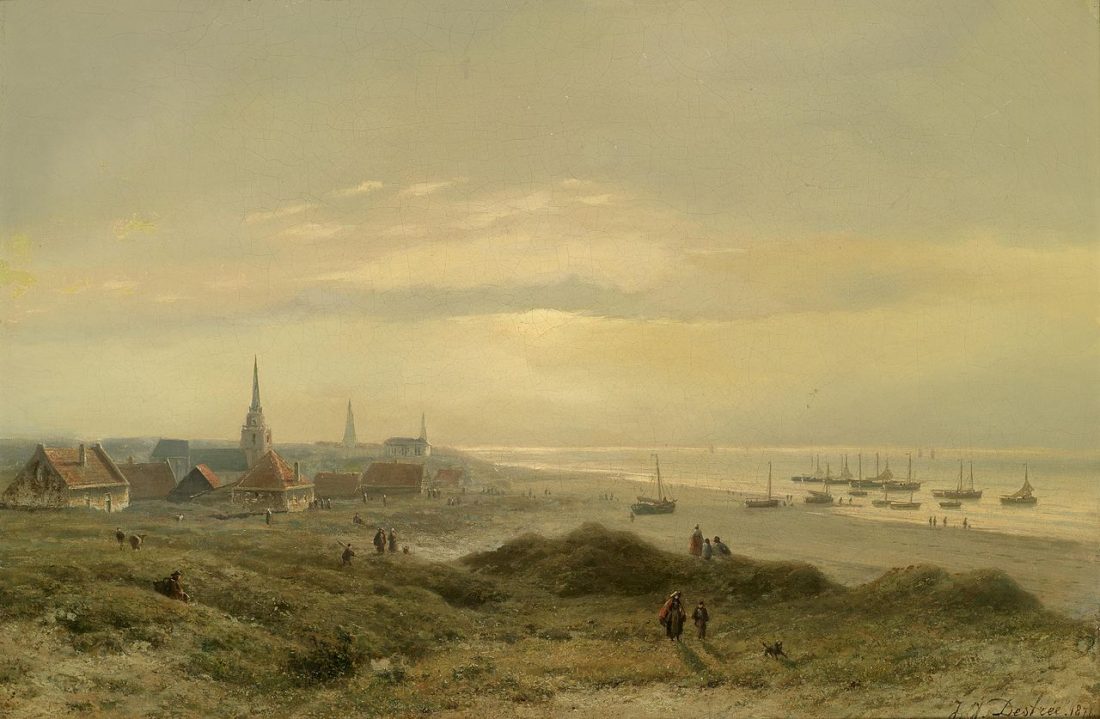 View of Scheveningen 1871 by Johannes Joseph Destree
View of Scheveningen 1871 by Johannes Joseph Destree
Note the vessels clustered offshore – among such a grouping the Brancas would have lurked
Given the disparities of armament and crew, resistance by the Isabella must have appeared suicidal. Hornsby seems however to have had the agreement of his crew to fight it out and he accordingly refused to comply when André of the Brancas called on him to strike his colours. Like any privateer André was naturally focussed on capture of a valuable prize rather than on her destruction and his initial attack on the Isabella was with small-arms fire only. Hornsby ordered his men to shelter and by skilful manoeuvring avoided two French attempts to board on the port quarter. By this stage the Brancas was bringing her guns as well as her small-arms into action and Hornsby was replying with his two port weapons.
This part of the action lasted – amazingly – for upwards of an hour but at two in the afternoon the privateer ran her bowsprit into the main shrouds on Isabella’s port side and held there. Captain André again demanded that Hornsby strike, and was one again rejected. Some twenty French now crossed only to be driven back by a hail of blunderbuss-fire. The Brancas broke free and attacked the Isabella on her starboard side. A new boarding attempt was made – this must have been a nightmare conflict, conducted as it was with hatchets and pole-axes as well as small arms. The two ships were by now lashed together and Hornsby’s men, concentrated at the Isabella’s stern, were somehow holding back the attackers, fresh men crossing from the Brancas to replace dead and wounded boarders. These attackers had taken shelter behind (or rather ahead of) the mainmast when Hornsby fired on them again with his blunderbuss. He had not realised that in the heat of the moment it had been doubly loaded and, as he fired, the weapon burst, throwing him down bruised but still defiant. Boarding proving too costly, Captain André now pulled his men back on board the Brancas and broke away, apparently determined on destruction – and revenge – rather than on capture of a prize.
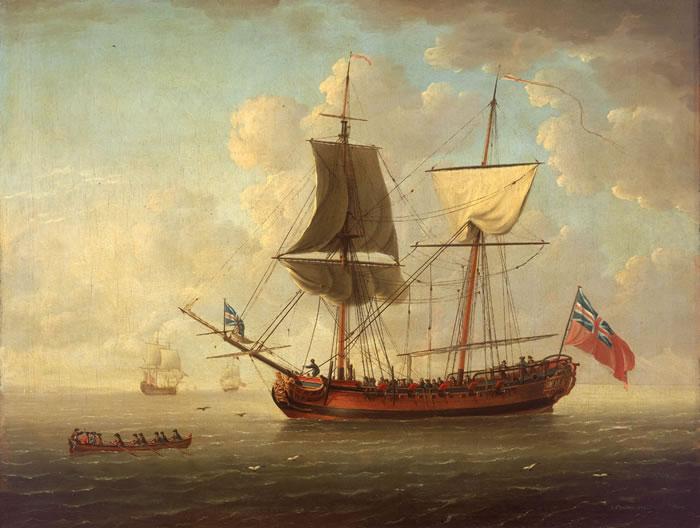 Royal Navy brigantine, 18th Century – the Brancas might have looked roughly similar
Royal Navy brigantine, 18th Century – the Brancas might have looked roughly similar
As the French vessel sheered off Captain Hornsby managed to fire his starboard guns into her stern – raking her – and a new yard-arm to yard-arm gunnery battle commenced, a miniature version of the single-ship frigate actions of later decades. Isabella – not surprisingly – had the worst of it, her hull damaged, her sails and rigging torn to shreds and every mast and yard damaged to some extent. The resolve of Hornsby and his crew must have been almost superhuman but it was rewarded by landing a lucky hit on the Brancas “between wind and water” – i.e. along the waterline. This forced the French captain to draw away to plug the leak, thereby giving the Isabella enough respite to haul her fallen ensign up again.
 Boarding – the close-quarters horror of the Age of Fighting Sail
Boarding – the close-quarters horror of the Age of Fighting Sail
The contest was taking place close inshore and crowds had hurried to the beach on foot and by coach to view the spectacle. With her leak stopped, the Brancas now returned to deliver the crippled Isabella what must be her coup-de-grace. She crossed under the Isabella’s stern subjecting her to a volley of small-arms fire, one musket ball hitting Hornsby on the temple. He bled profusely but was not otherwise seriously wounded. Brancas now poured three broadsides into the Isabella but was again driven away by another lucky water-line strike. A hasty repair was enough to bring her back into action – another five broadsides were smashed into the Isabella’s hull and André once more called on Hornsby to strike her colours. With his demand once more rejected, he ordered his men to bring Brancas alongside to board once more and was answered with a refusal. They had had enough and there was nothing more to be done but for André to break off the fight.
 A man-of-war exploding – by the Russian painter Ivan Aivazovsky
A man-of-war exploding – by the Russian painter Ivan Aivazovsky
The Brancas’s detonation would have been smaller, but no less deadly
What happened now was perhaps the most remarkable aspect of the encounter. As the Brancas drew away, Isabella fired on her for the last time. A shot passed through the French vessel’s already badly damaged stern and set off her magazine. The Brancas blew up in a spectacular explosion – so powerful in fact that only three survivors of her crew were picked up by Dutch fishing boats. Isabella herself, a floating wreck, had survived an engagement that had lasted for a seven hours. It would have been a creditable achievement for a warship but an unprecedented one for a civilian vessel.
The courage of Hornsby and his crew were deservedly recognised. Three months later, at Kensington Palace, King George II presented him with a gold medal and chain worth £100 while each of his crew members – who seem all to have survived – were awarded £5 each, though with only £2 for the boys. It is sad to note however that Hornsby lived only another seven years and died at sea “of a lingering illness”.
Hornsby and his men deserve to be remembered.


